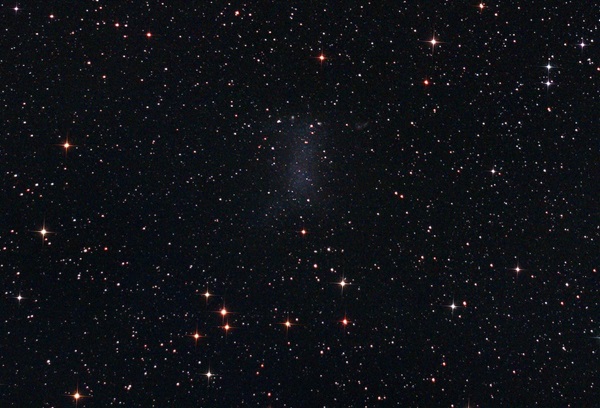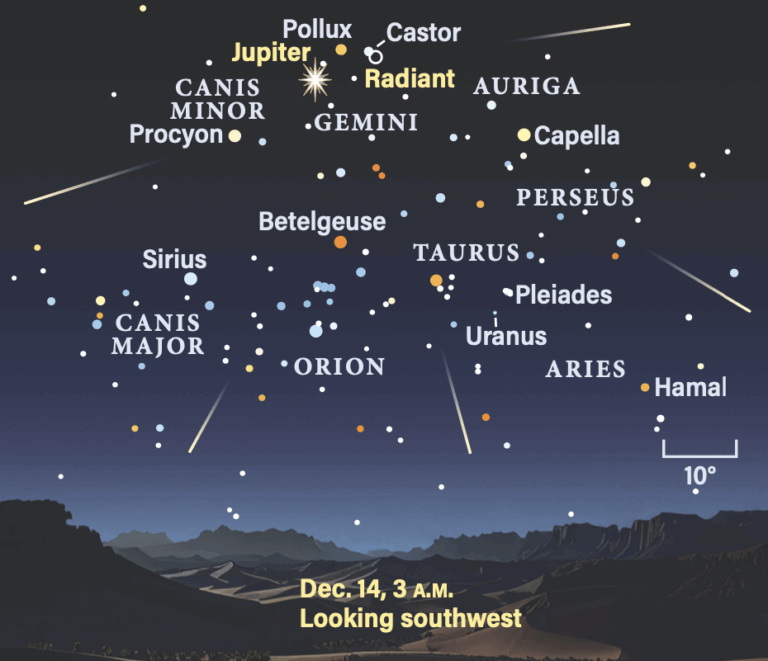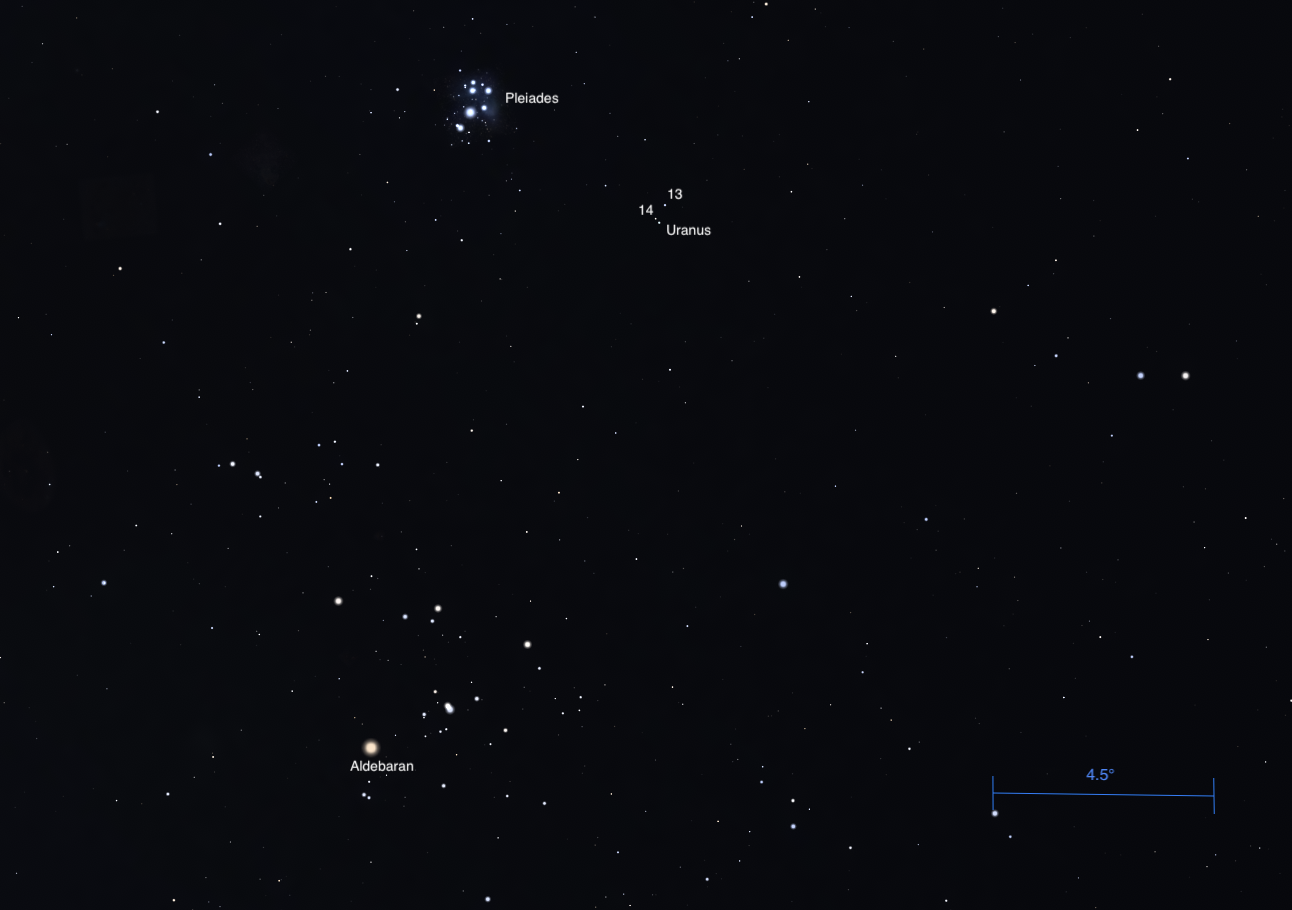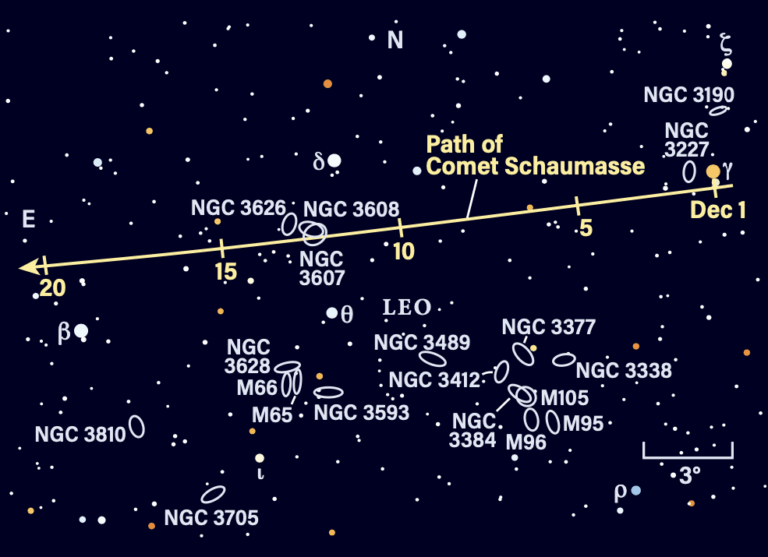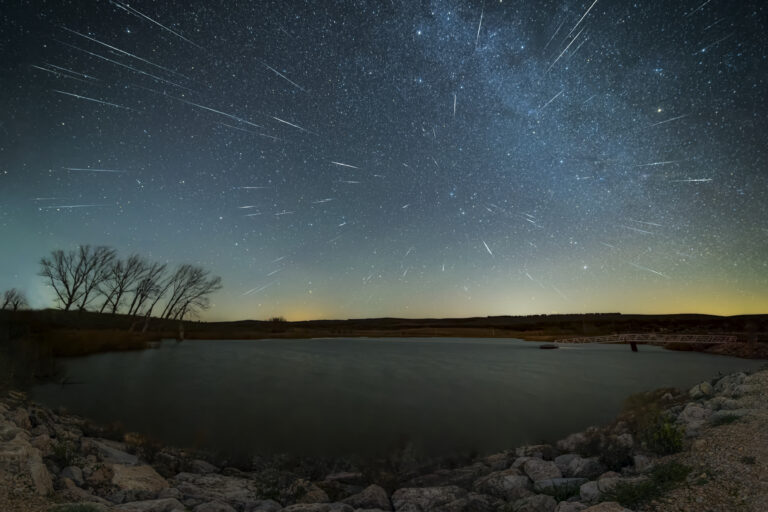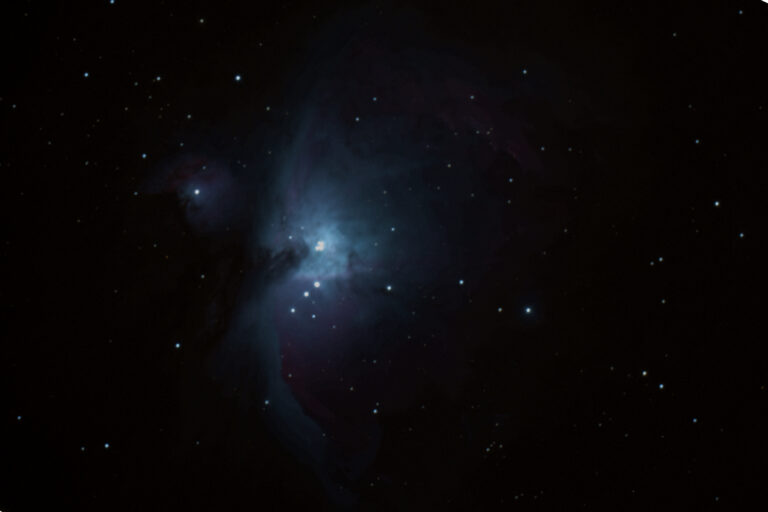Key Takeaways:
Barnard’s Galaxy (NGC 6822) was discovered by American astronomer Edward Emerson Barnard through a 6-inch refractor in 1881. You’ll find this object in Sagittarius, 1.5° north-northeast of 5th-magnitude 55 Sagittarii.
NGC 6822 is an example of a dwarf irregular galaxy. Barnard’s Galaxy was the first galaxy beyond the Magellanic Clouds for which astronomers calculated a distance. In 1925, American astronomer Edwin Hubble used Cepheid variable stars within it to estimate its distance at 700,000 light-years. The current best number, however, is 1.5 million light-years.
NGC 6822 glows softly at magnitude 8.1 — which is actually pretty bright for a galaxy. Unfortunately, that light spreads out over an area 16′ by 14′, which is 30 percent the area of the Full Moon. That makes its overall surface brightness low. So, whichever telescope you use, start with the eyepiece that gives you the widest field of view. You’re looking for a dim haze roughly twice as long as it is wide.
Large scopes will let you see several star-forming regions at the northern end of the galaxy. The best way to spot them is through a 14-inch or larger scope used in conjunction with a nebula filter. Without a filter, look for a slightly brighter streak of stars along the galaxy’s long axis. You might even see some single supergiant stars — these are recognizable by the grainy appearance they lend the galaxy.
Make sure to explore Astronomy’s full list of 101 cosmic objects you must see. New entries will be added each week throughout 2022.

